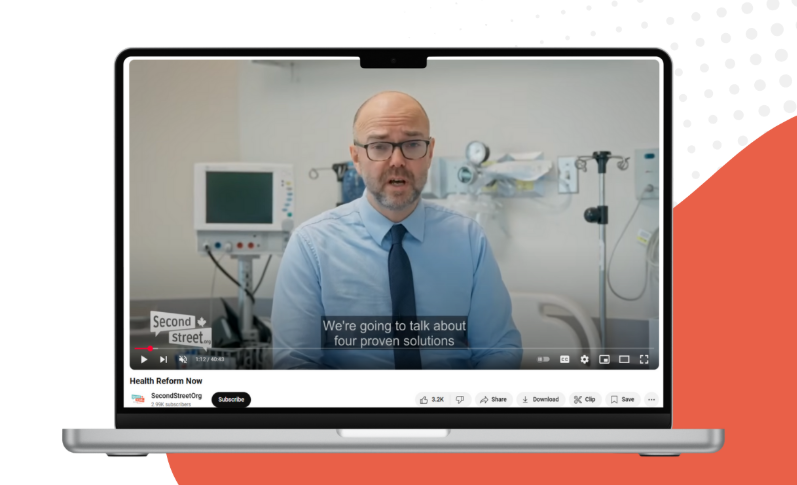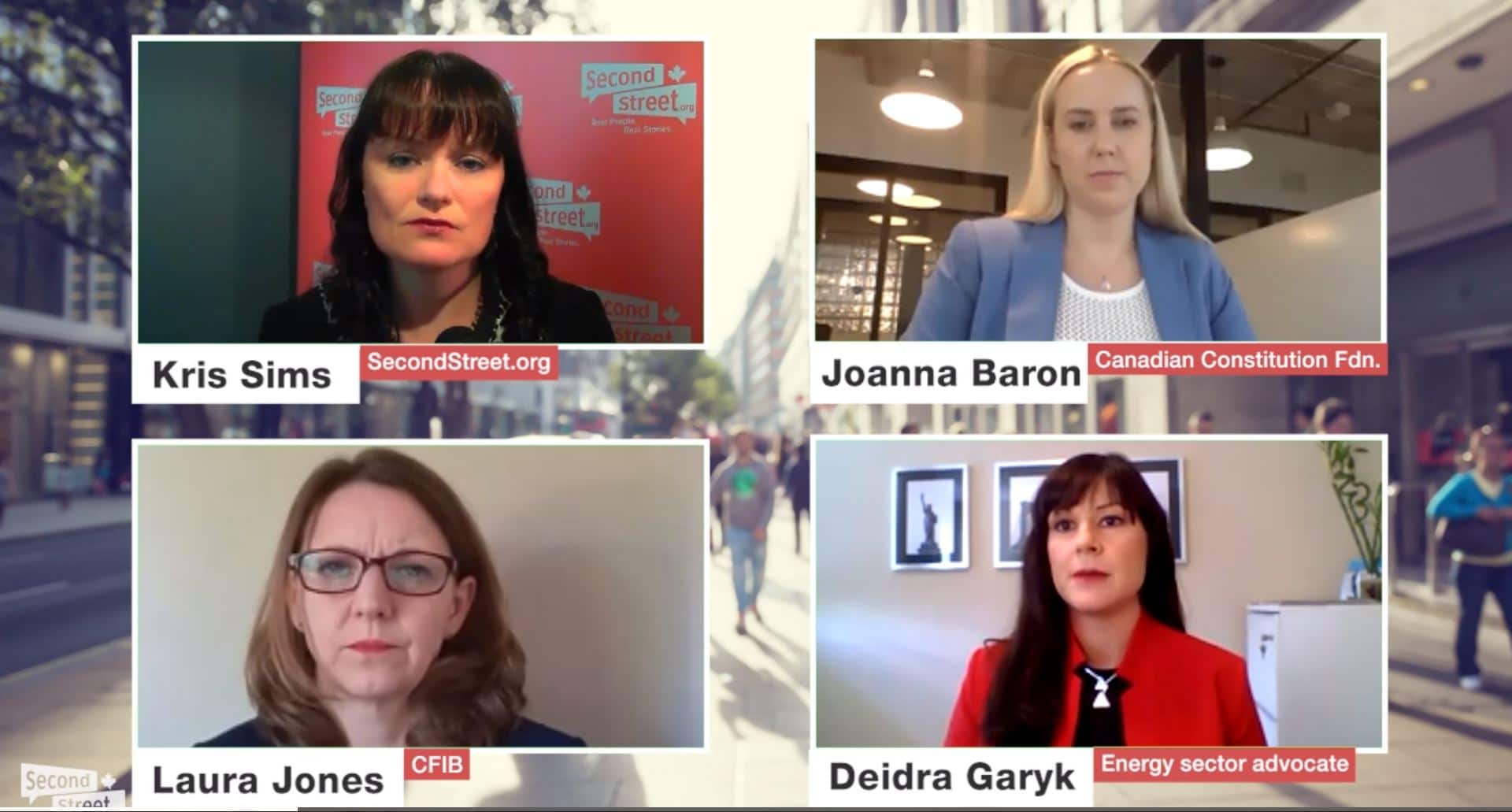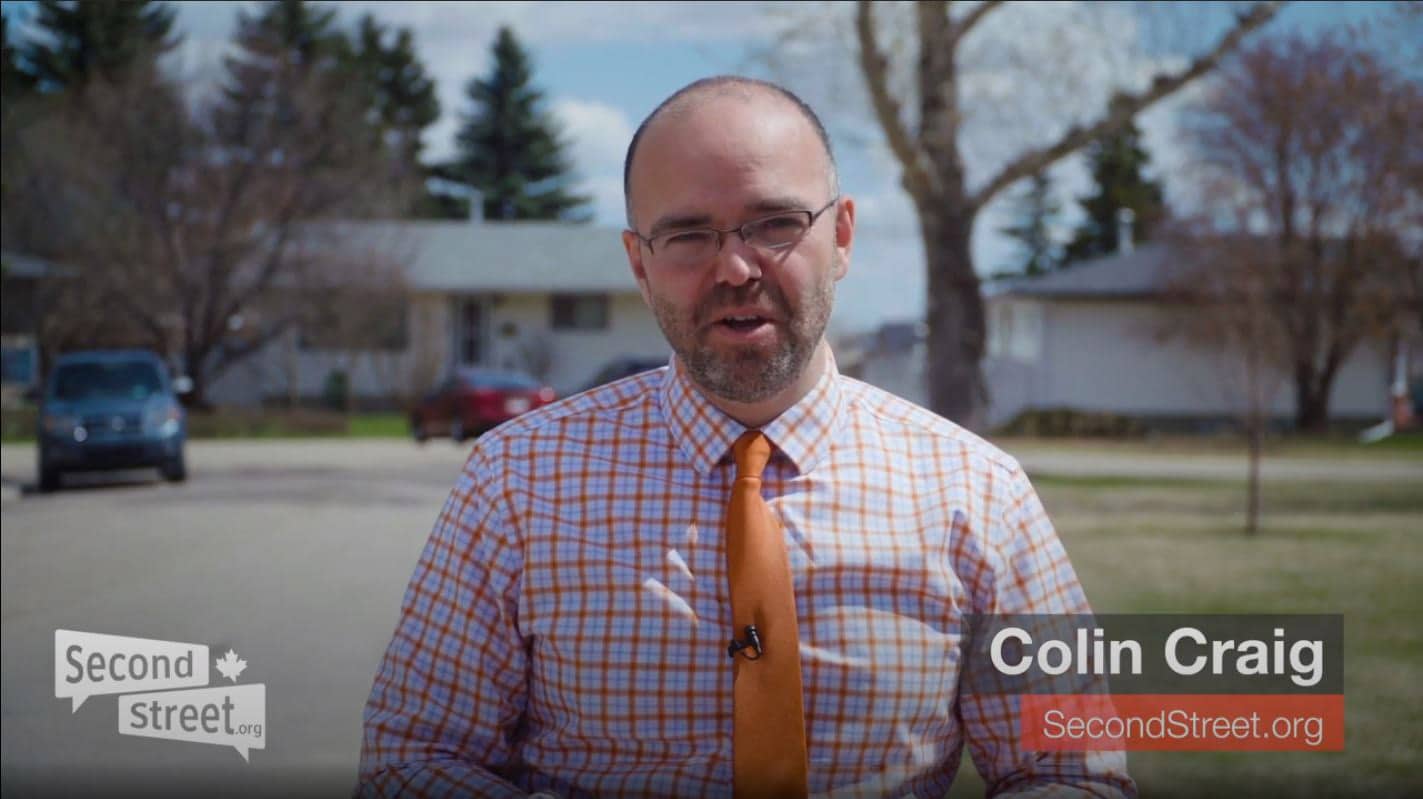
Canada Needs Health Reform Now
Canada Needs Health Reform Now Canada’s health care system is in crisis. Too many patients are waiting long periods to find a family doctor, meet with

Canada Needs Health Reform Now Canada’s health care system is in crisis. Too many patients are waiting long periods to find a family doctor, meet with

SecondStreet.org spoke with Rob Breakenridge to discuss our policy brief that goes over some solutions to make housing more affordable.
Some of the policy proposals include raising the threshold for GST exemptions on homes, eliminating or reducing land transfer taxes, and making it easier for builders to get new housing projects done.
Breakenridge’s show can be heard on 770 CHQR in Calgary.

For many Canadians, the dream of owning a home is getting tougher to achieve, thanks to very high home prices.
SecondStreet.org looks at some ways the government can make housing more affordable.

SecondStreet.org continued our research into cool ways entrepreneurs are reducing emissions through new technology and processes.

I called up my friend Tracy Johnson recently and asked her a simple question, “how would you like it if your business saw a 6 per cent drop in revenues?”

Canada’s unemployment rate is high and many businesses have shut down for good. So what can governments do to get the economy going again?

After COVID-19 hit Canada, governments across the country started to allow restaurants and pubs to sell alcohol with delivery and takeout orders. Many provinces also started to allow doctors to videoconference with patients.

Many CTV News channels covered our news release about relaxed red tape measures during the COVID-19 and the public’s desire to keep the changes. From continuing to allow restaurants to sell alcohol with delivery orders to allowing patients to continue to video conference with doctors, the changes have been a hit with Canadians.

VANCOUVER (NEWS 1130) – While many aspects of normal life remain restricted during the COVID-19 pandemic, there’s also a list of things governments have loosened up on, from alcohol delivery, to court proceedings, to virtual health care.

Just for starters, you’d have to walk to the grocery store…

What can governments do to spur economic growth without spending money? Lots. Here are five examples:

The demands of certain environmental organizations to completely phase out oil and gas development and to “keep it in the ground” have been gaining in popularity. These demands are now reaching the ears of some politicians, whose decisions reflect a growing aversion to the use and development of petroleum and gas products.
If Canadians lived healthier lives, we could reduce demand for emergency services, orthopaedic surgeries, primary care and more.
For instance, if you visit the Canadian Cancer Society’s website, you’ll read that “about four in ten” cancer cases are preventable. The Heart and Stroke Foundation notes that “almost 80 percent of premature heart disease and stroke can be prevented through healthy behaviours.” A similar number of Diabetes cases are also preventable.
Many joint replacements and visits to ERs and walk-in clinics could also be avoided through healthy living.
To be sure, not all health problems can be avoided through healthy living – everyday the system treats Canadians with genetic conditions, helps those injured in unavoidable accidents and more.
But there is an opportunity to reduce pressure on the health care system through Canadians shifting to healthier lifestyles – better diets, more exercise, etc.
To learn more, watch our Health Reform Now documentary (scroll up) or see this column.
European countries will partner with anyone who can help patients.
It doesn’t matter if it’s a non-profit, a government entity or a private clinic. What matters is that patients receive quality treatment, in a timely manner and for a competitive price.
In Canada, governments often delivery services using government-run hospitals instead of seeing if non-profit or private clinics could deliver the services more effectively.
When governments have partnered with non-profit and private clinics, the results have often been quite good – Saskatchewan, Ontario and British Columbia are just a few examples of where partnerships have worked well.
Canada should pursue more of these partnerships to reduce wait times and increase the volume of services provided to patients.
To learn more, watch our Health Reform Now documentary (scroll up) or see the links above.
In Canada, citizens pay high taxes each year and we’re promised universal health care services in return. The problem is, wait times are often extremely long in our health system – sometimes patients have to wait years to see a specialist or receive surgery.
If patients don’t want to wait long periods, they often have to reach into their own pocket and pay for treatment outside the province or country.
Throughout the European Union, we also find universal health care systems. But a key difference is that EU patients have the right to go to other EU countries, pay for surgery and then be reimbursed by their home government. Reimbursements cover up to what the patient’s home government would have spent to provide the treatment locally.
If Canada copied this approach, a patient waiting a year to get their hip operation could instead receive treatment next week in one of thousands of surgical clinics throughout the developed world.
Governments benefit too as the patient is now back on their feet and avoiding complications that sometimes come with long wait times – meaning the government doesn’t have to treat those complications on top of the initial health problem.
To learn more, watch our Health Reform Now documentary (scroll up) or this shorter video.
Canada is the only country in the world that puts up barriers, or outright bans patients from paying for health services locally.
For instance, a patient in Toronto cannot pay for a hip operation at a private clinic in Toronto. Their only option is to wait for the government to eventually provide treatment or leave the province and pay elsewhere.
Countries with better-performing universal health care systems do not have such bans. They allow patients a choice – use the public system or pay privately for treatment. Sweden, France, Australia and more – they all allow choice.
Why? One reason is that allowing choice means some patients will decide to pay privately. This takes pressure off the public system. For instance, in Sweden, 87% of patients use the public system, but 13% purchase private health insurance.
Ultimately, more choice improves access for patients.
To learn more, watch our Health Reform Now documentary (scroll up) or watch this short clip on this topic.
In Canada, most hospitals receive a cheque from the government each year and are then asked to do their best to help patients. This approach is known as “block funding”.
Under this model, a patient walking in the door represents a drain on the hospital’s budget. Over the course of a year, hospital administrators have to make sure the budget stretches out so services are rationed. This is why you might have to wait until next year or the year after for a hip operation, knee operation, etc.
In better-performing universal health systems, they take the opposite approach – hospitals receive money from the government each time they help a patient. If a hospital completes a knee operation, it might receive, say, $10,000. If it completes a knee operation on another patient, it receives another $10,000.
This model incentivizes hospitals to help more patients – to help more patients with knee operations, cataract surgery, etc. This approach also incentivizes hospitals to spend money on expenses that help patients (e.g. more doctors, nurses, equipment, etc.) rather than using the money on expenses that don’t help patients (e.g. more admin staff).
To learn more about this policy option, please watch our Health Reform Now documentary (scroll up) or see this post by MEI.